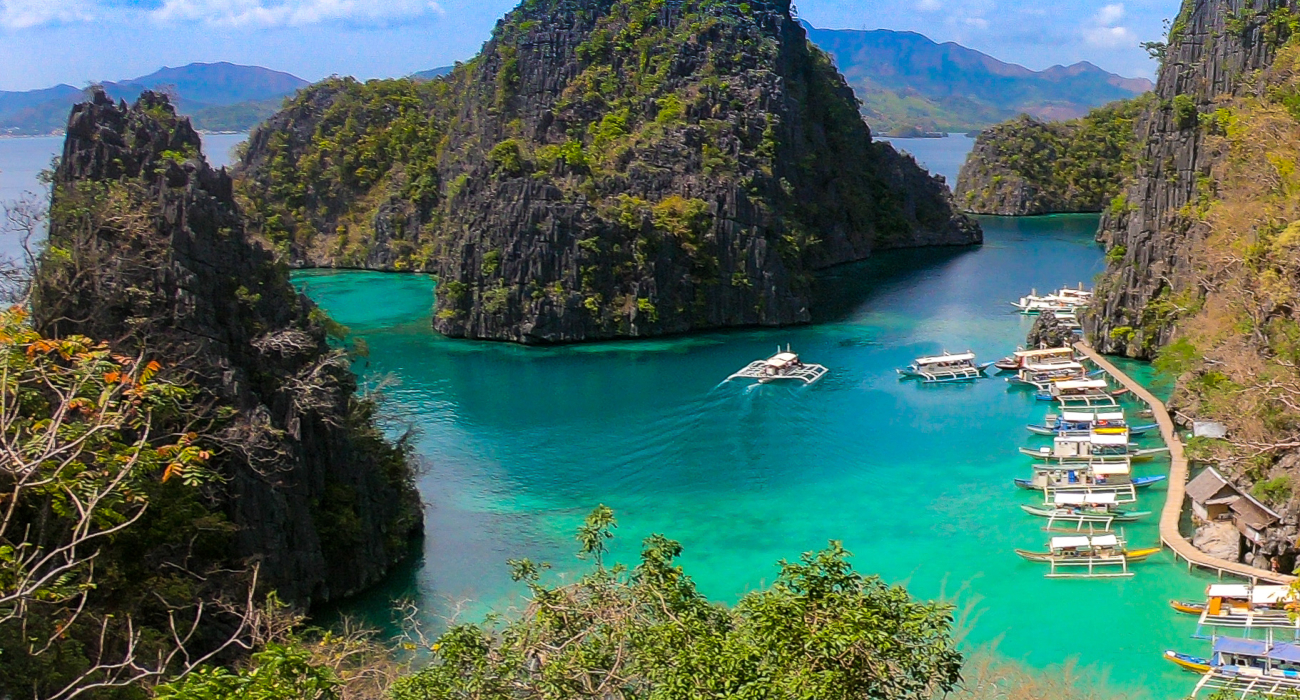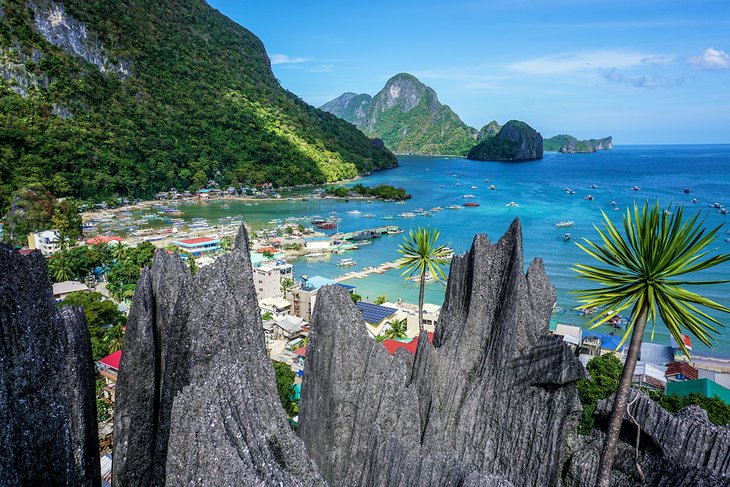
The Philippines, a vibrant archipelago nestled in the heart of Southeast Asia, is a land of breathtaking beauty, rich history, and warm hospitality. Often called the "Pearl of the Orient," it offers a diverse tapestry of experiences, from pristine beaches and lush rainforests to ancient historical sites and bustling cityscapes. This comprehensive guide will take you on a journey through the best tourist attractions the Philippines has to offer, equipping you with the knowledge to plan an unforgettable adventure.
A Glimpse into the Past: History of the Philippines
Understanding the Philippines requires understanding its complex and fascinating history. Its story is one of resilience, colonization, and a vibrant cultural fusion.
Related Articles about Unveiling the Pearl of the Orient: A Comprehensive Guide to the Best Tourist Attractions in the Philippines:
- ¡Viva México! A Comprehensive Travel Guide to a Land of Enchantment
- A Journey Through the Senses: Your Ultimate Guide to Morocco
- Indonesia: A Tapestry of Wonders – Unveiling the Best Tourist Attractions
- Iceland: A Land of Fire and Ice, Adventure and Serenity
- The Dragon Awakens: A Comprehensive Travel Guide to China
-
Pre-Colonial Era: Before the arrival of the Spanish in the 16th century, the islands were inhabited by diverse ethnic groups, each with its own culture, languages, and social structures. Trade flourished with neighboring countries like China and Indonesia, shaping the islands’ early economies and cultural influences.
-
Spanish Colonization (1521-1898): Ferdinand Magellan’s arrival in 1521 marked the beginning of Spanish colonization. For over 300 years, the Spanish established a strong presence, leaving a lasting impact on religion (predominantly Catholicism), architecture, and language (Spanish-based Filipino). This era witnessed the construction of iconic churches, forts, and cities, many of which remain today.
-
American Colonization (1898-1946): After the Spanish-American War, the United States took control of the Philippines. This period saw the introduction of American education, infrastructure, and democratic ideals. However, it was also marked by resistance and struggles for independence.
-
World War II and Independence: The Philippines suffered greatly during World War II, occupied by Japan. After the war, the country gained its independence on July 4, 1946. This milestone marked the beginning of a new era, with the Philippines forging its own identity and navigating its path to development.
-
Modern Philippines: The country has faced its share of challenges, including political instability and economic disparities. However, it continues to evolve, embracing its cultural heritage while embracing modernity. The Filipino spirit of resilience, hospitality, and a strong sense of community remains at its core.
Must-See Attractions: A Journey Through Paradise
The Philippines boasts an unparalleled array of attractions, catering to every type of traveler. Here’s a curated list of must-see destinations:
1. Boracay Island: Renowned for its powdery white sand beaches and crystal-clear turquoise waters, Boracay is a tropical paradise. White Beach, the island’s main attraction, offers stunning sunsets, water sports, and a vibrant nightlife. Explore the quieter Bulabog Beach for windsurfing and kitesurfing, or venture to Diniwid Beach for a more secluded experience.
2. Palawan Province: Often hailed as one of the world’s most beautiful islands, Palawan is a haven for nature lovers.
* **El Nido:** Known for its dramatic limestone cliffs, hidden lagoons, and diverse marine life, El Nido is a must-visit. Explore the stunning Bacuit Bay by island hopping, snorkel in vibrant coral reefs, and kayak through secret lagoons like Secret Lagoon and Shimizu Island.
* **Puerto Princesa Subterranean River National Park:** A UNESCO World Heritage Site, this park is home to an underground river that flows through a cave system. Take a boat tour through the caves and marvel at the stunning rock formations.
* **Coron:** Offers shipwreck diving, stunning lagoons, and pristine beaches. The iconic Kayangan Lake and Barracuda Lake are must-visits.3. Banaue Rice Terraces: A UNESCO World Heritage Site, the Banaue Rice Terraces are a testament to the ingenuity of the Ifugao people. Carved into the mountains over 2,000 years ago, these terraced fields are a breathtaking sight. Hike through the terraces, interact with the local communities, and experience the rich cultural heritage of the Cordillera region.
4. Chocolate Hills of Bohol: A unique geological formation, the Chocolate Hills are a series of cone-shaped hills that turn brown during the dry season, resembling chocolate kisses. This natural wonder offers stunning panoramic views and is a photographer’s dream.
5. Mayon Volcano, Albay: Known for its perfect cone shape, Mayon Volcano is an active stratovolcano that dominates the landscape of Albay. Witness its beauty from various viewpoints, hike through the surrounding trails, or visit the Cagsawa Ruins, the remnants of a church destroyed by a volcanic eruption.
6. Vigan City, Ilocos Sur: A UNESCO World Heritage Site, Vigan City is a well-preserved Spanish colonial town. Wander through the cobblestone streets, admire the ancestral houses, and experience the charm of a bygone era. Take a kalesa (horse-drawn carriage) ride and savor the local delicacies.
7. Intramuros, Manila: The historic walled city of Intramuros is a living museum, offering a glimpse into Manila’s Spanish colonial past. Explore the fortresses, churches, and museums, and imagine life within the walls during the colonial era.
8. Siargao Island: A surfer’s paradise, Siargao is renowned for its world-class waves, particularly Cloud 9. Even if you’re not a surfer, the island offers stunning beaches, lagoons, and a laid-back atmosphere. Explore the Magpupungko Rock Pools and enjoy the island’s vibrant nightlife.
Travel Tips: Navigating the Archipelago
To ensure a smooth and enjoyable trip, keep these travel tips in mind:
- Visa Requirements: Check the visa requirements based on your nationality. Many nationalities can enter the Philippines visa-free for a limited period.
- Currency: The Philippine Peso (PHP) is the local currency. ATMs are readily available in major cities and tourist areas. Credit cards are widely accepted in hotels, restaurants, and shops.
- Language: Filipino and English are the official languages. English is widely spoken, making communication easy for most travelers.
- Best Time to Visit: The dry season, from November to May, is the best time to visit the Philippines. The weather is generally sunny and dry, making it ideal for outdoor activities.
- Transportation: Domestic flights are the most convenient way to travel between islands. Buses and ferries are also available, but travel times can be longer. Within cities, taxis, jeepneys (colorful public transport vehicles), and tricycles are common modes of transportation.
- Safety: The Philippines is generally safe for tourists. However, it’s essential to be aware of your surroundings, take precautions against petty theft, and avoid venturing into areas known for potential safety concerns.
- Bargaining: Bargaining is common in markets and with local vendors. It’s acceptable to negotiate prices, but always be respectful.
- Respect Local Customs: Dress modestly when visiting religious sites, and be mindful of local customs and traditions. Filipinos are generally warm and welcoming.
- Connectivity: Internet access is available in most cities and tourist areas. You can purchase a local SIM card for convenient mobile data access.
- Pack Accordingly: Pack light clothing, swimwear, sunscreen, insect repellent, and comfortable shoes for exploring. Consider packing a raincoat or umbrella, especially during the wet season.
Accommodation: Where to Rest Your Head
The Philippines offers a wide range of accommodation options to suit every budget and preference.
- Luxury Hotels: Major cities and popular tourist destinations boast luxurious hotels with world-class amenities, such as the Shangri-La Boracay, The Peninsula Manila, and El Nido Resorts.
- Mid-Range Hotels: You can find comfortable and well-equipped hotels in most cities and towns. These are a great option for those looking for value for money.
- Budget-Friendly Hostels and Guesthouses: Hostels and guesthouses are a popular choice for budget travelers. They offer basic accommodation, social environments, and opportunities to meet fellow travelers.
- Resorts and Beach Bungalows: Many islands and coastal areas offer resorts and beach bungalows, allowing you to immerse yourself in the natural beauty of the surroundings.
- Airbnb: Airbnb offers a wide variety of apartments, houses, and rooms for rent, providing a more local experience.
Nearby Hotels (Examples):
- Boracay: Shangri-La Boracay, The Lind Boracay, Henann Regency Resort & Spa
- Palawan (El Nido): El Nido Resorts, Seda Lio, Apulit Island Resort
- Banaue: Banaue Hotel & Youth Hostel, Sagada Guest House
- Manila: The Peninsula Manila, Makati Shangri-La, Hotel Jen Manila
Local Delights: A Culinary Adventure
Philippine cuisine is a flavorful fusion of indigenous, Spanish, Chinese, and American influences. Prepare your taste buds for a culinary adventure:
- Adobo: The national dish, adobo is a savory stew of meat (usually chicken or pork) braised in soy sauce, vinegar, garlic, and peppercorns.
- Sinigang: A sour and savory soup made with tamarind or other souring agents, typically featuring meat (pork, beef, or seafood) and vegetables.
- Lechon: Roasted pig, known for its crispy skin and tender meat.
- Sisig: A sizzling dish made from chopped pig’s face, ears, and liver, seasoned with onions, chili peppers, and calamansi juice.
- Halo-Halo: A popular dessert made with shaved ice, sweet beans, fruits, jellies, and leche flan, topped with ice cream.
- Kinilaw: A dish similar to ceviche, made with raw fish marinated in vinegar, onions, ginger, and chili peppers.
- Pancit: A noodle dish, with various regional variations, often stir-fried with vegetables and meat.
Transportation Options: Getting Around the Philippines
- Flights: Domestic flights are the most efficient way to travel between islands, especially for longer distances. Major airlines include Cebu Pacific, Philippine Airlines, and AirAsia Philippines.
- Ferries: Ferries are a more affordable option for island hopping, offering scenic views. However, travel times can be longer.
- Buses: Buses are a common mode of transport on the main islands, providing access to various destinations.
- Jeepneys: These iconic, colorful public transport vehicles are a unique Filipino experience. They operate on set routes within cities.
- Taxis: Taxis are readily available in major cities and tourist areas. Metered taxis are recommended.
- Tricycles: These motorcycle sidecars are a common mode of transportation in smaller towns and cities.
- Car Rental: Car rental is an option, especially if you plan to explore a specific island at your own pace.
Conclusion: Embrace the Filipino Spirit
The Philippines is a destination that will captivate your senses, challenge your perspectives, and leave you with lasting memories. From its stunning natural landscapes and rich historical heritage to its warm and welcoming people, the Pearl of the Orient offers an unparalleled travel experience. Embrace the Filipino spirit of "bayanihan" (community spirit) and allow yourself to be immersed in the beauty and wonder of this remarkable archipelago. So pack your bags, prepare your adventurous spirit, and get ready to discover the magic that awaits you in the Philippines!








